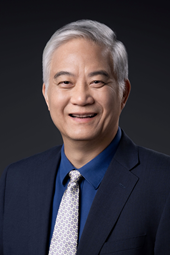
搜索网站、位置和人员

新闻与活动 活动信息
理学讲坛 | 唐本忠:Clusteroluminescence: A Fundamentally New Luminescence System
时间
2025年4月2日(周三)
下午14:30-16:00
地点
西湖大学云谷校区E10-201
主持
西湖大学理学院 邓力 教授
受众
全体师生
分类
名家讲座
理学讲坛 | 唐本忠:Clusteroluminescence: A Fundamentally New Luminescence System
时间: 2025年4月2日(周三)下午14:30-16:00
Time: 14:30-16:00, Wednesday, April 2, 2025
主持人: 西湖大学理学院 邓力 教授
Host: Prof. Li Deng, Xu Yiming Endowed Chair Professor, School of Science
地址:西湖大学云谷校区E10-201
Venue: E10-201, Yungu Campus, Westlake University
讲座语言:英文
Lecture Language: English

唐本忠 院士
香港中文大学(深圳)
Prof. Benzhong Tang,
the Chinese University of Hong Kong, Shenzhen
主讲人/Speaker:
Prof. Tang received his B.S. and PhD degrees from South China University of Technology and Kyoto University in 1982 and 1988, respectively. He conducted postdoctoral research at The University of Toronto from 1989 to 1994. He joined the Hong Kong University of Science & Technology in 1994 and was promoted to Chair Professor in 2008. He was elected to the Chinese Academy of Sciences in 2009 and the World Academy of Sciences for the Advancement of Science in Developing Countries in 2020. In 2021, he joined The Chinese University of Hong Kong, Shenzhen, as Dean of School of Science and Engineering, with a concurrent appointment of X.Q. Deng Presidential Chair Professor.
讲座摘要/Abstract:
Luminescence, as a natural gift, plays an essential role in our colorful world. So far, it is believed that the development of highly efficient fluorophores relies on covalently electronic conjugation. The traditional photophysical mechanism based on through-bond conjugation seems to be perfect in explaining the luminescence of most conjugated molecules. However, some inexpensive commodity materials without any aromatic structures, such as peptides, polysaccharides, and some artificial polymers, can emit visible and bright emission. Although this phenomenon has been observed for a long time, it has not attracted much attention as the underlying mechanisms were still unclear, and these materials were hard to utilize as luminescent materials due to their low efficiency. Recent works illustrate that the single-dispersed solutions of these (macro)molecules do not emit light under UV excitation, but their aggregates can emit bright visible light. This kind of conceptually new photophysical phenomenon is named “clusteroluminescence”.1-3 Further experiments and theoretical calculations suggest that the through-space electronic interactions between the lone pairs of heteroatoms would form rigid nanocluster structures in the aggregate state, which ultimately emit light as a chromophore.4-6 In terms of application, Clusteroluminescent materials exhibit remarkable biocompatibility, paving the way for applications in bioimaging and tracking probes.7 Meanwhile, as the inter- or intra-molecular distance is sensitive to mechanical force, smart mechanically responsive materials can be developed.
References
1. R. Hu, N. L. C. Leung, B. Z. Tang, et al. Chem. Soc. Rev., 2014, 43, 4494.
2. H. Zhang, B. Z. Tang, et al. J. Am. Chem. Soc., 2017, 139, 16264.
3. H. Zhang, B. Z. Tang, et al. Mater. Today, 2019, 32, 275.
4. J. Zhang, B. Z. Tang, et al. J. Am. Chem. Soc., 2021, 143, 9565.
5. Z. Xiong, H. Zhang, B. Z. Tang, et al. Chem. 2024, 11, 102299.
6. Q. Xu, B. Z. Tang, et al. Nature Photonics 2024, 18, 1185.
7. J. Zhang, H. Zhang, B. Z. Tang, et al. Angew. Chem. Int. Ed., 2024, 63, e202413751.
讲座联系人/Contact:
理学院,朱怡,邮箱:zhuyi48@westlake.edu.cn
School of Science, Ms. Yi ZHU, Email: zhuyi48@westlake.edu.cn

















